Over six hundred of the world’s finest mobility experts gathered at the Sheraton Hotel in the charming town of Porto in Portugal for the 2015 EuRA conference in April. It was an overload of information from the great and the good of the industry, all valuable but too much to comprehend at one sitting. For this reason The Mover will be including reports from EuRA in the next few issues: medicine a spoon at a time!
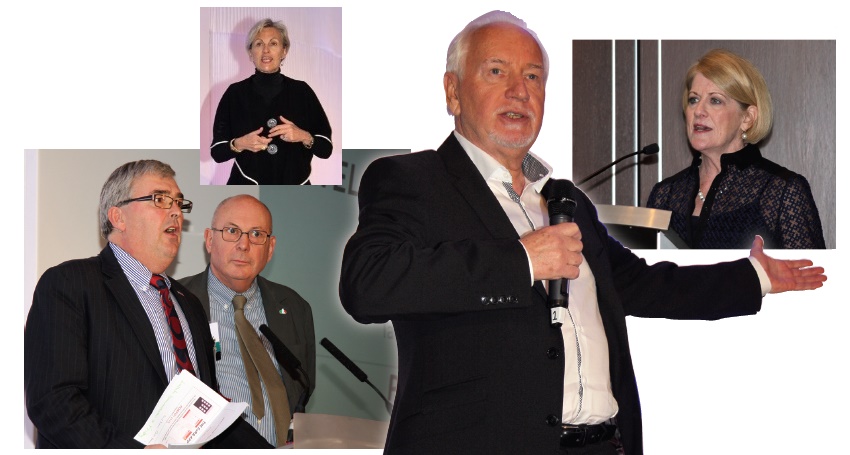
Patrick Oman took to the stage for his last presidential assignment ably bounced off Tad Zurlinden EuRA’s CEO, in a double act that would have made a worthy challenge to Ant and Dec. Both were kept under control by the poised and utterly competent Frances Edmonds as facilitator.
Key drivers for the future
The opening keynote address came from Ray Hammond, a futureologist, entitled: ‘The eight key drivers for the future’ in which he discussed what will shape the future for us all. He said, for example, that the mobile phone was not something that we will have in the future. At least, that’s not what it will be called. For example he said that when first invented a motor car was called an ‘Iron Horse’ because there was no language to explain it better at the time. Similarly a movie projector was called a ‘magic lantern’.
Ray also had a warning. Having been through his first seven key drivers he arrived at the eighth which, he said, was the bottom two billion people on the world’s social ladder. “If our governments don’t invite these people in,” he said, “they will come and get us.” A topical thought for a group dedicated to global mobility. He also said that if cultural differences become dissolved and the world becomes one, it will be a poorer place. “I believe that we can do globalisation in a way that respects and enhances old cultures allowing them to thrive while meshing with the world.”
Photos: Top photo - clockwise from top right: Peggy Love; Ray Hammond; Tad Zurlinden and Patrick Oman; Frances Edmonds
Being Appy
Peggy Love (Dwellworks) moderated a session about the use of apps and how they will be applied in the mobility industry. After discussing the growth of the industry and the emergence of apps such as Uber, the meeting turned to look closely at itself. The audience was split into small working groups and asked to consider specific mobility functions such as school search or visa application. In each case they were asked to speculate about whether, in the future, it might be possible to provide that function automatically, without any personal contact, using an ap p. Interesting!
p. Interesting!
There was much disagreement however, as the meeting progressed, it became clear that many of the services traditionally provided by relocation professionals could, in the future, be accessed online. Many people used the argument that when assignees are under stress they need the reassurance of personal contact. However, that is judging the situation by today’s standards. As new generations come along, people who have grown up with modern technology, understand it and trust it, why wouldn’t they, for example, choose their own accommodation from a virtual tour. After all, people are perfectly happy booking their flights online now when the technology is relatively untried.
It became clear that the mobility industry would need to change and, if it didn’t, many of the companies now flourishing would find life much more difficult in the future.
DSPs and RMCs working together
It seemed at first sight that RMCs (Relocation Management Companies) and DSPs (Destination Service providers) should be working together, after all they are both trying to serve the same clients. However, there were clear divisions in which the master/servant relationship was common. The panel included Richard Tucker from Cartus; Susie Goodall from Brookfield; and Jacqueline Biersma from TEAM Relocations.
The meeti ng began with moderators Sabine Baerlocher, EuRA Vice President (Active Relocation, Switzerland) and Patrick Oman (Irish Relo, Dublin) explaining the results of a recent survey in which respondents had identified the most important factors in a DSP/RMC relationship. Clear communication was high on the list; followed by expectation management; demonstrating added value; performance feedback; cost saving and price negotiations; and solution focussed thinking.
ng began with moderators Sabine Baerlocher, EuRA Vice President (Active Relocation, Switzerland) and Patrick Oman (Irish Relo, Dublin) explaining the results of a recent survey in which respondents had identified the most important factors in a DSP/RMC relationship. Clear communication was high on the list; followed by expectation management; demonstrating added value; performance feedback; cost saving and price negotiations; and solution focussed thinking.
The biggest round of applause came when it was suggested that
DSPs have a choice about whether they accept work and at what price. The suggestion was that the choice was an illusion as the barriers to entry to the market were very low and there will always be some newcomer that will undercut. Although the gap between the experienced and the new members of the industry seemed small it was, in fact, very large. Corporate accounts should be at the meeting, it was suggested, so they could understand the pressures under which both DSPs and RMCs operate.
The Zeitgeist
This session, panelled by Peggy Smith of Worldwide ERC, Steve Cryne of the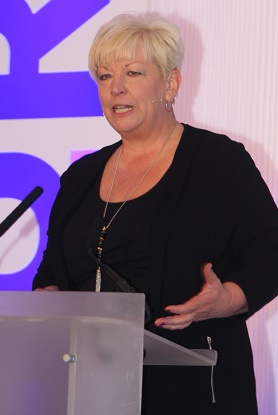 Canadian ERC and Dr Barbara Gibson, an Intercultural Communication Consultant, looked at the key skills needed by global leaders and how companies and suppliers can cultivate a mobility mindset that supports long-term development of skilled global executives while improving the short-term performance in international assignments. Peggy and Steve provided input from the relocation perspective while Dr Gibson shared the results of her dissertation on ‘intercultural competences needed by global CEOs’. Full report next month.
Canadian ERC and Dr Barbara Gibson, an Intercultural Communication Consultant, looked at the key skills needed by global leaders and how companies and suppliers can cultivate a mobility mindset that supports long-term development of skilled global executives while improving the short-term performance in international assignments. Peggy and Steve provided input from the relocation perspective while Dr Gibson shared the results of her dissertation on ‘intercultural competences needed by global CEOs’. Full report next month.
Immigration – what’s working and what’s not
This session looked at 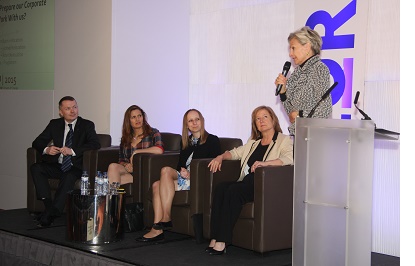 how ‘blue cards’ are working across Europe and asked contributors from around the world to provide their thoughts on the immigration processes that applied in their countries. The advice was designed to help relocation companies advise their clients on how to remain compliant while using the available relocation services to their best effect. The presentation was facilitated by Anita Meyer from am&pm Relocation with the aid of Kasia Pinska from Fragomen, Stuart McAlister from Inter Relocation and Sabine Baerlocher of Active Relocation.
how ‘blue cards’ are working across Europe and asked contributors from around the world to provide their thoughts on the immigration processes that applied in their countries. The advice was designed to help relocation companies advise their clients on how to remain compliant while using the available relocation services to their best effect. The presentation was facilitated by Anita Meyer from am&pm Relocation with the aid of Kasia Pinska from Fragomen, Stuart McAlister from Inter Relocation and Sabine Baerlocher of Active Relocation.
Photos: Top - Sabine Baelocher and Steve Cryne; Peggy Smith; Dr Barbara Gibson; the Immigration Session.
EuRA supports Porto children’s home
In common with many organisations nowadays, EuRA selec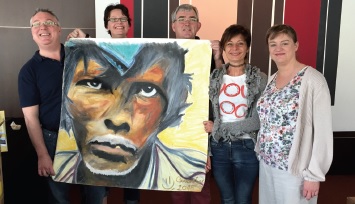 ted a charitable cause to support at the conference. This year EuRA raised money to provide a new bus for a local children’s home run by the Portuguese Association for the Rights of Children and Families. The old one was falling apart. There are seven homes in Portugal, two of which are in Porto. The bus is used to allow the children to travel to sports and cultural events around the city. They said that they would like to undertake longer journeys without the fear of the bus breaking down. To raise money EuRA prepared a very useful app for the conference and contributed €5 every time someone downloaded it. In addition EuRA arranged both a silent and a live auction to encourage delegates to part with their money. By the end of the conference the group had raised €20,000, more than enough to pay for the new vehicle.
ted a charitable cause to support at the conference. This year EuRA raised money to provide a new bus for a local children’s home run by the Portuguese Association for the Rights of Children and Families. The old one was falling apart. There are seven homes in Portugal, two of which are in Porto. The bus is used to allow the children to travel to sports and cultural events around the city. They said that they would like to undertake longer journeys without the fear of the bus breaking down. To raise money EuRA prepared a very useful app for the conference and contributed €5 every time someone downloaded it. In addition EuRA arranged both a silent and a live auction to encourage delegates to part with their money. By the end of the conference the group had raised €20,000, more than enough to pay for the new vehicle.
Photo: The EuRA team with a painting presented from the children’s home in thanks for raising money for the new bus
The Port Party
When the business of relocation was complete, the EuRA delegates headed across the river to the historic area of Vila Nova de Gaia and the Taylor’s Port Wine Cellars. There the group was treated to a conducted tour and explanation of the port-making process followed by dinner and much dancing until late. Welcome relaxation after an intense four-day event.
Port facts
Wines in the cellars age either in cask or in vat. Casks are seasoned oak barrels usually holding around 630 litres of wine. They are used mainly to age Tawny Ports, in particular the smooth and mellow 10, 20, 30 and 40 Year Old Tawnies of which Taylor is the leading producer. Cask ageing encourages contact between the wine and the wood and intensifies the ageing process. The rich and complex aromas of maturity, such as notes of butterscotch, walnut and fine oak wood, therefore develop more quickly in a cask.
Oak vats normally hold at least 20,000 litres of wine. In these impressive vessels, there is less contact between the Port and the wood. This method of ageing is therefore used mainly for the fruitier styles of Port where the wood ageing is intended to give the wine smoothness and a degree of complexity but allow it to retain its youthful structure and freshness.
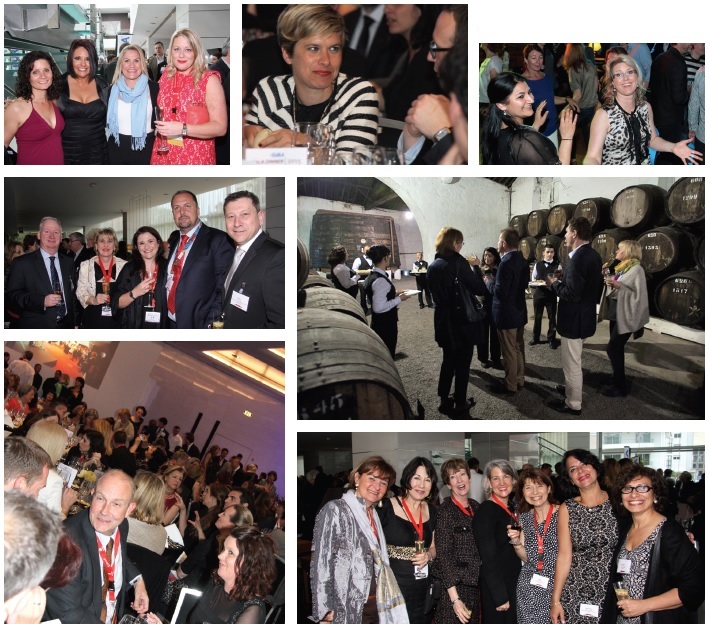 Photo: The port party. Click here to view the next Editor's pick
Photo: The port party. Click here to view the next Editor's pick